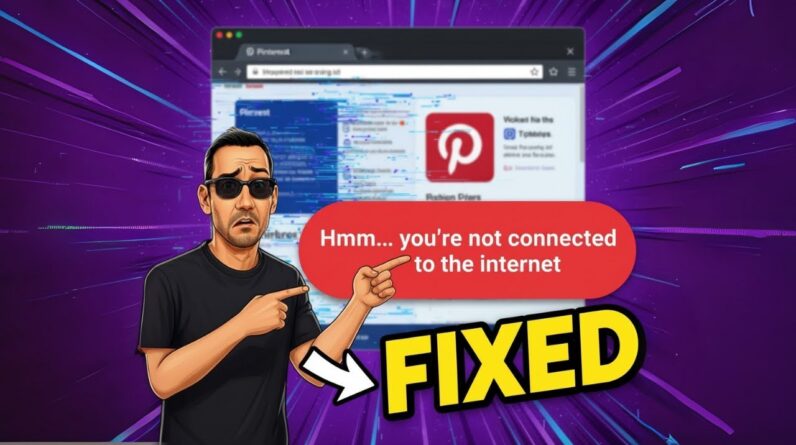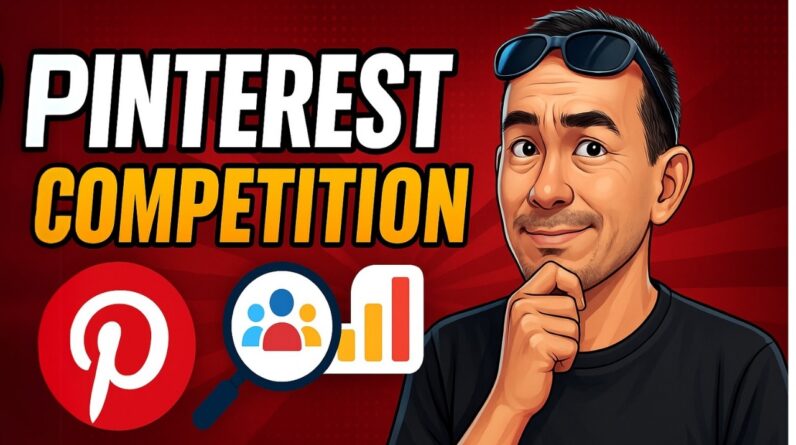
If you’ve ever uploaded a video online, you’ve probably wondered how to get more people to watch it. It’s a common question for content creators seeking to grow their audience and increase their video views. One potential solution that may come to mind is paid advertising. But before you dive into your wallet, it’s important to consider the pros and cons of using paid advertising to promote your videos. In this article, we will explore the benefits and drawbacks of investing in paid advertising, helping you make an informed decision on whether it’s the right strategy for you. So, grab a cup of coffee and let’s embark on this journey together!
Benefits of using paid advertising
Increased visibility
Paid advertising provides the opportunity to increase the visibility of your videos. By putting your content in front of a larger audience, you can reach potential viewers who may not have come across your videos otherwise. This increased visibility helps to generate brand awareness and attract more viewers to your channel.
Targeted audience reach
One of the key benefits of using paid advertising is the ability to target specific audiences. Different platforms offer various targeting options, allowing you to narrow down your audience based on factors such as demographics, interests, and behavior. This targeted approach ensures that your videos are shown to the most relevant viewers, increasing the likelihood of engagement and conversions.
Boost in video views
Paid advertising can give your videos an immediate boost in views. By promoting your content through platforms like YouTube, Google, Facebook, Instagram, and Twitter, you can reach a wider audience and encourage more people to watch your videos. This increased viewership can help to build credibility, attract new subscribers, and expand your channel’s reach.
Enhanced brand awareness
By utilizing paid advertising, you can significantly enhance your brand awareness. Through consistent exposure to your target audience, your brand becomes more recognizable and memorable. People are more likely to remember and engage with a brand that they have seen multiple times, and paid advertising provides the perfect opportunity to make a lasting impression on potential viewers.
Increased subscriber base
Paid advertising can also help you grow your subscriber base. When people watch your videos through paid ads, they have the option to subscribe to your channel. By attracting new subscribers through paid advertising, you can build a loyal audience that is more likely to engage with and share your future content. This can lead to a long-term increase in views, engagement, and conversions.
Considerations before using paid advertising
Budget allocation
Before diving into paid advertising, it’s important to determine a budget that aligns with your goals and resources. Consider how much you are willing to spend to promote your videos and allocate your funds accordingly. It’s essential to strike a balance between the amount you invest in paid advertising and the potential returns you expect to achieve.
Content quality
Paid advertising is only effective when backed by high-quality content. Before running any campaigns, make sure that your videos are well-produced, engaging, and provide value to your target audience. Poorly made videos may not generate the desired results, regardless of how much money you invest in advertising.
Target audience analysis
Understanding your target audience is crucial for the success of your paid advertising efforts. Take the time to analyze your audience’s demographics, interests, and behavior. This information will help you tailor your ad campaigns to reach the right people and ensure that your content resonates with them.
Campaign goals
Clearly define your goals before starting any paid advertising campaigns. Ask yourself what you want to achieve with your ads. Do you want to increase views, gain more subscribers, drive website traffic, or promote a specific product or service? Setting specific and measurable goals will guide your campaign strategy and help you assess its success.
Factors to analyze in paid advertising
Cost per view (CPV)
CPV refers to the cost you pay for each individual video view. Analyzing the CPV metric allows you to understand the efficiency of your ad spend. It helps you identify which campaigns are generating the most cost-effective views and optimize your budget allocation accordingly.
Click-through rate (CTR)
CTR measures the percentage of people who click on your ad after seeing it. A high CTR indicates that your ad is engaging and compelling, while a low CTR suggests that it may not be resonating with your target audience. By analyzing CTR, you can optimize your ad creative and messaging to improve performance.
Conversion rate
Conversion rate measures the percentage of viewers who take a desired action, such as subscribing to your channel, visiting your website, or making a purchase. By analyzing conversion rates, you can identify which campaigns are driving the most valuable actions and optimize your ads to maximize conversions.
Return on investment (ROI)
ROI measures the profitability of your paid advertising campaigns. It compares the amount you spend on advertising with the revenue or value generated as a result. Analyzing ROI helps you understand the overall effectiveness of your campaigns and make data-driven decisions about future investments.
Types of paid advertising platforms
YouTube Ads
YouTube Ads provide the opportunity to reach a massive audience through video-based advertising. With various ad formats, targeting options, and measurement tools, YouTube Ads allow you to promote your videos and channel to a highly engaged user base.
Google Ads
Google Ads offers a wide range of advertising options, including display ads, search ads, and video ads. By leveraging Google’s extensive reach and targeting capabilities, you can effectively promote your videos to users across Google’s network of websites and platforms.
Facebook Ads
With over 2.6 billion monthly active users, Facebook offers a vast potential audience for your video ads. Facebook Ads allow you to target users based on demographics, interests, and behavior, ensuring that your videos are shown to the most relevant viewers.
Instagram Ads
Instagram Ads allow you to promote your videos to over 1 billion monthly active users on the platform. With visually appealing ad formats and precise targeting options, you can capture the attention of Instagram users and encourage them to engage with your videos.
Twitter Ads
Twitter Ads provide the opportunity to reach a highly engaged audience through promoted tweets and videos. With targeting options based on interests, keywords, and demographics, you can ensure that your videos are seen by the right people on Twitter.
Determining the right paid advertising platform
Target audience demographics
Consider the demographics of your target audience when choosing a paid advertising platform. Each platform attracts a different user base, and it’s important to select the one that aligns with your audience demographics to maximize the effectiveness of your ad campaigns.
Platform algorithms and targeting options
Different platforms have different algorithms and targeting options. Some platforms may provide more precise targeting capabilities, while others may offer broader reach. Consider the features and capabilities of each platform to ensure that they align with your campaign goals and targeting needs.
Budget constraints
Take your budget into account when choosing a paid advertising platform. Some platforms may require a higher minimum spend, while others may offer more flexibility. Evaluate the cost-effectiveness of each platform and choose the one that fits within your budget constraints.
Advertising goals
Your specific advertising goals also play a role in selecting the right platform. If your main goal is to increase video views, YouTube Ads may be the best choice. If you want to drive website traffic or promote a product, Google Ads or Facebook Ads may be more suitable. Consider which platform aligns with the goals you have set for your campaigns.
Tips for optimizing paid advertising campaigns
Define clear campaign objectives
Before launching any paid advertising campaigns, clearly define your objectives. Do you want to increase views, gain subscribers, drive website traffic, or achieve a specific conversion goal? Having a clear understanding of your objectives will help you structure your campaigns and measure success effectively.
Create compelling video content
The content of your videos is crucial for the success of your ad campaigns. Create compelling and engaging videos that resonate with your target audience. Consider the format, length, and messaging of your videos to capture viewers’ attention and encourage them to take the desired action.
Use precise targeting options
Take advantage of the targeting options provided by the advertising platforms to reach the most relevant audience for your videos. Narrow down your targeting based on demographics, interests, and behavior to ensure that your ads are shown to people who are most likely to be interested in and engage with your content.
Regularly monitor and analyze metrics
Monitor and analyze the performance metrics of your paid advertising campaigns on a regular basis. Keep an eye on metrics such as CPV, CTR, conversion rate, and ROI to understand how your campaigns are performing. Use this data to make data-driven decisions and optimize your campaigns for better results.
Experiment with different ad formats
Don’t be afraid to experiment with different ad formats to see what works best for your audience. Try out different lengths, formats, and messaging styles to determine which ones generate the most engagement and conversions. Continuously testing and optimizing your ad formats can lead to improved campaign performance.
Case studies on successful paid advertising
Brand X: How YouTube Ads generated a 50% increase in video views
Brand X utilized YouTube Ads to promote their video content and saw a significant increase in views. By targeting specific demographics and leveraging YouTube’s vast user base, they were able to reach a larger audience and attract more viewers to their channel. The campaign resulted in a 50% increase in video views, boosting brand visibility and attracting new subscribers.
Company Y: Leveraging Facebook Ads for targeted audience reach
Company Y leveraged Facebook Ads to promote their videos and reach a highly targeted audience. By utilizing Facebook’s precise targeting options, they were able to narrow down their audience based on interests and demographics. This targeted approach led to increased engagement, views, and conversions, ultimately helping Company Y expand their customer base and drive business growth.
Business Z: Achieving high conversion rates with Google Ads
Business Z used Google Ads to drive conversions and achieve their campaign goals. By strategically targeting relevant keywords and optimizing their ad copy, they attracted users who were actively searching for their products. This targeted approach resulted in high conversion rates and a positive return on investment for Business Z.
Common mistakes to avoid in paid advertising
Poor campaign planning and targeting
One common mistake in paid advertising is not properly planning and targeting your campaigns. Without a clear strategy and understanding of your target audience, your ads may not reach the right people, resulting in poor performance and wasted ad spend. Take the time to plan and strategize your campaigns before launching them.
Inconsistent ad delivery
Consistency is key when it comes to paid advertising. Inconsistent ad delivery can lead to gaps in exposure and missed opportunities to engage with potential viewers. Ensure that your ads are delivered consistently and monitor their performance to make adjustments as needed.
Lack of proper tracking and analysis
Not tracking and analyzing the performance of your paid advertising campaigns can hinder your ability to optimize and improve results. Without proper tracking, you won’t be able to accurately measure the success of your campaigns or identify areas for improvement. Make sure to implement tracking mechanisms and regularly analyze your data.
Ignoring ad format optimization
Ad format optimization is essential for maximizing the effectiveness of your paid advertising campaigns. Neglecting to optimize your ad formats for different platforms and audiences can result in poor engagement and conversion rates. Take the time to experiment with different formats and optimize your ads to ensure they resonate with your target audience.
Conclusion
Paid advertising offers numerous benefits for promoting your videos and growing your channel. Increased visibility, targeted audience reach, boosted video views, enhanced brand awareness, and increased subscribers are just a few of the advantages that paid advertising can provide. However, it’s crucial to consider factors such as budget allocation, content quality, target audience analysis, and campaign goals before diving into paid advertising. By analyzing metrics such as CPV, CTR, conversion rate, and ROI, you can optimize your campaigns for better results. Choosing the right paid advertising platform requires considering target audience demographics, platform algorithms, budget constraints, and advertising goals. Finally, by following tips such as defining clear campaign objectives, creating compelling video content, using precise targeting options, regularly monitoring metrics, and experimenting with different ad formats, you can optimize your paid advertising campaigns for success. Learning from successful case studies and avoiding common mistakes will further contribute to the effectiveness of your paid advertising strategies. Ultimately, paid advertising can be a valuable tool in promoting your videos and achieving your goals as a content creator.






